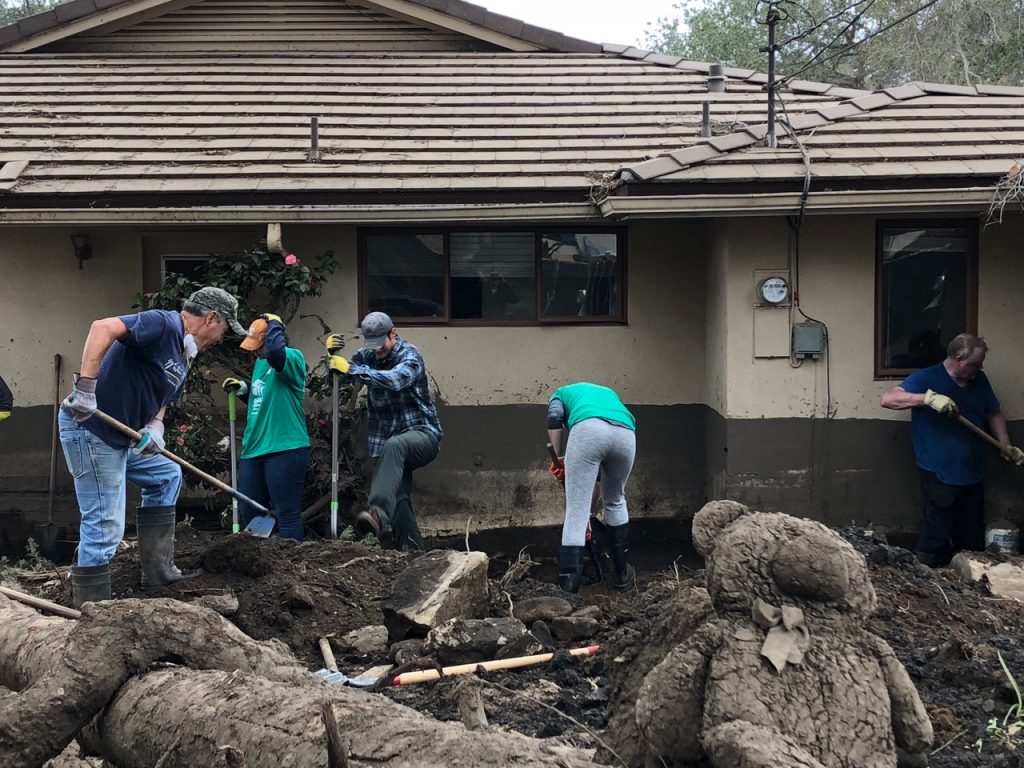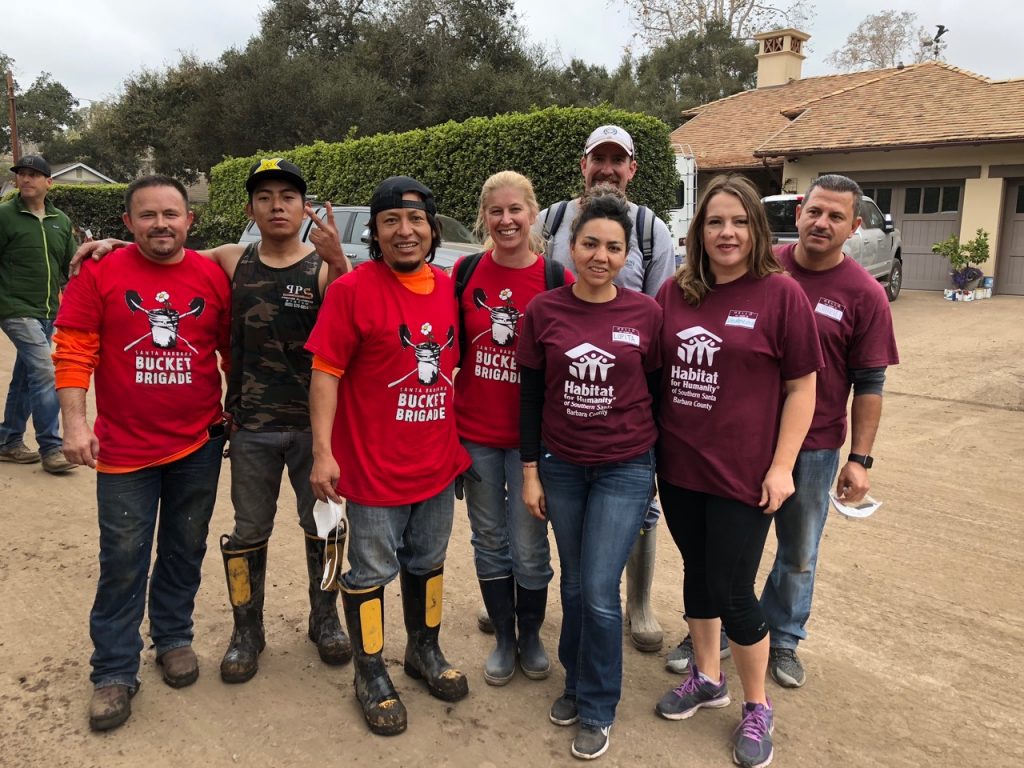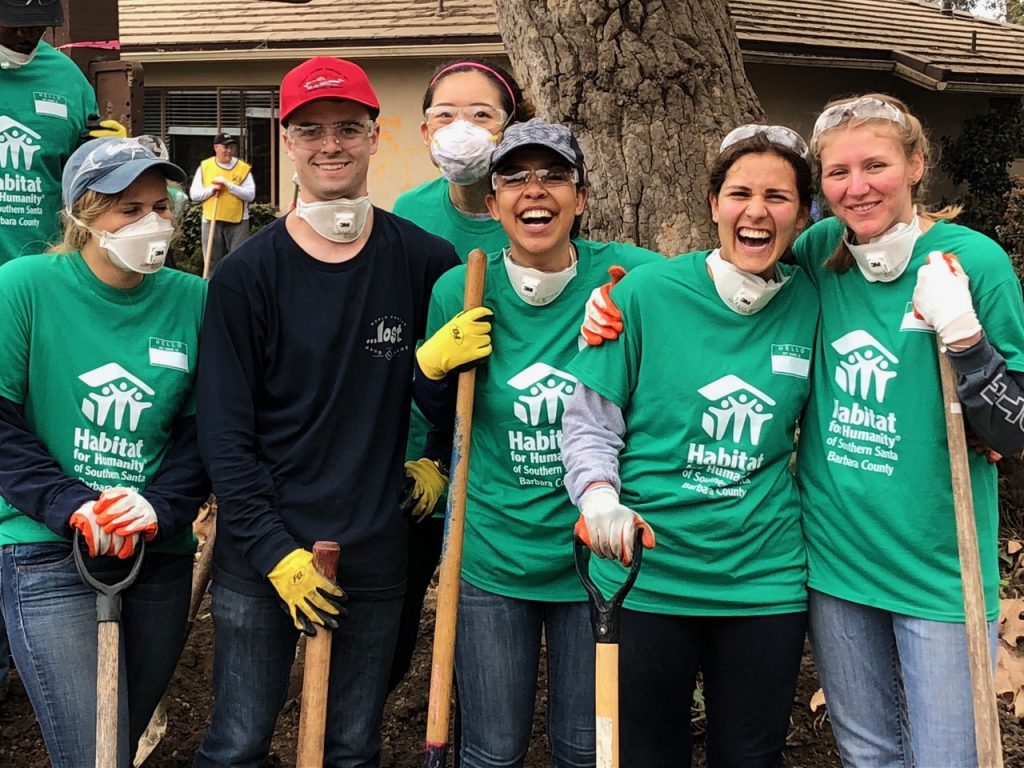Rising from the Mud
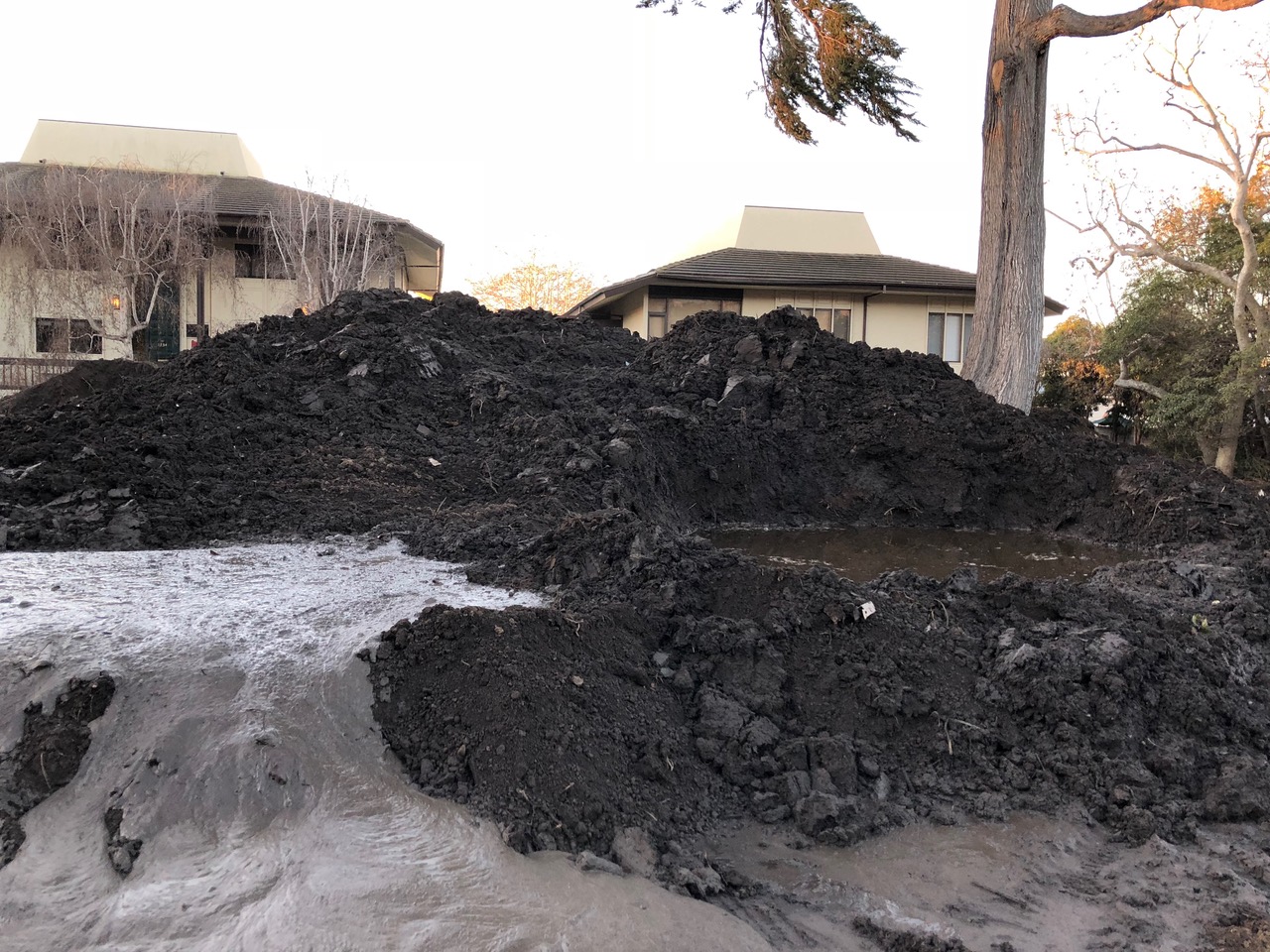
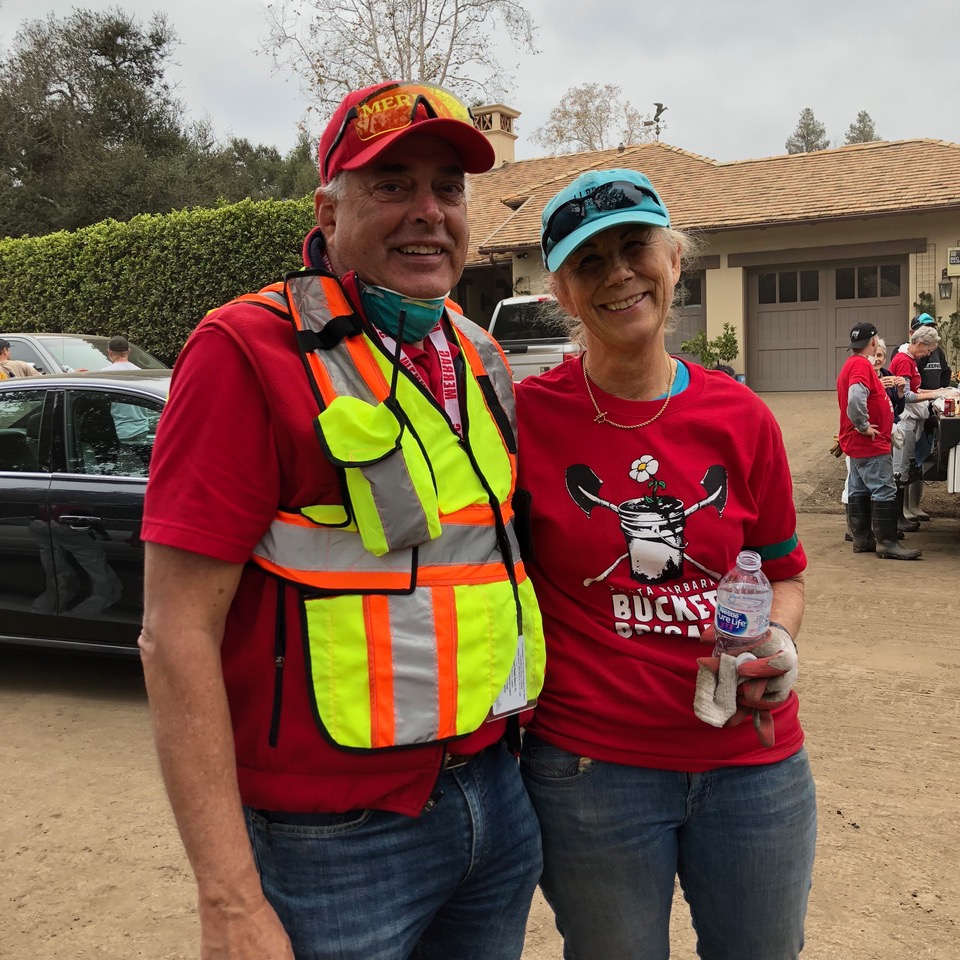
Montecito’s cleanup effort is well underway with the U.S. Army Corps of Engineers having cleared most of the creeks and debris basins. But a largely unanswerable question surrounds the massive mountain of mud still piled on private property: what to do with the stuff. This is not just an individual homeowner problem; it is a pervasive problem for the entire community.
Drive across East Valley Road through its former intersection with Randall Road and Glen Oaks Drive and try to envision a timeframe for rebuilding the private homes that are still hanging up in mud and trees. Walk down East Valley past the roadblocks at Hot Springs and visit the mud and devastation at Parra Grande Lane. Drive down Hot Springs and Olive Mill Road toward Coast Village Road to see the homes, once beautiful, now buried in muck and boulders. Observe the mountains of mud on private property at Casa de Maria, Bonnymede, the Four Seasons Biltmore, and sadly, the iconic San Ysidro Ranch.
One of the hardest hit areas of Montecito is the neighborhood of 65 homes tucked into an area just east of Olive Mill and north of North Jameson known as Montecito Oaks. This lovely family-friendly enclave features homes on smaller lots (by Montecito standards). Many of the homes are red-lined as uninhabitable, while others are yellow-tagged as damaged and dangerous. Today, mud, muck and debris still block entrances to garages and front doors; the stuff clings to fences and foundations, and prevents re-population despite the heroic community efforts of hundreds of volunteers from the Santa Barbara Bucket Brigade and the local chapter of Habitat for Humanity.
The Bucket Brigade
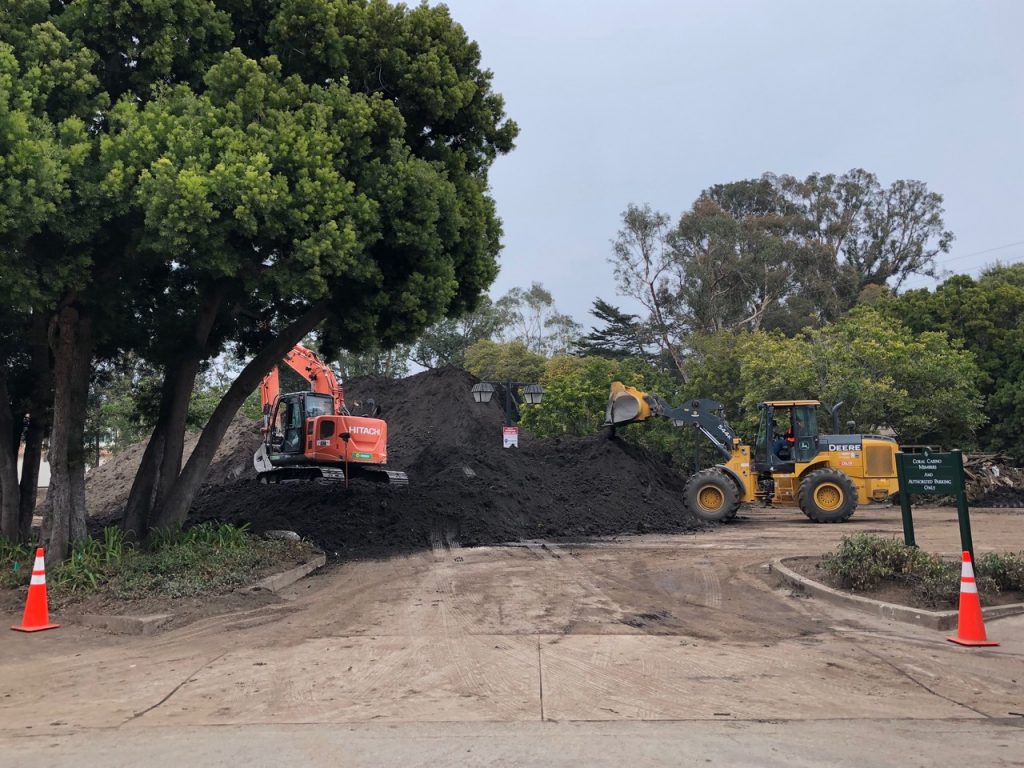
Hundreds of volunteers show up early in the morning at Manning Park to receive their team assignments from citizen-leader Abe Powell and his volunteer colleague, Tom Cole, the inspirational forces behind the Santa Barbara Bucket Brigade. The immediate task is to divide into work teams, and distribute masks, shovels, buckets, bobcats, excavators, skid steers, crawlers and backhoes to begin the painstaking work of clearing mud from private property homes and moving it to curbside for county truck removal.
Motivated Volunteers
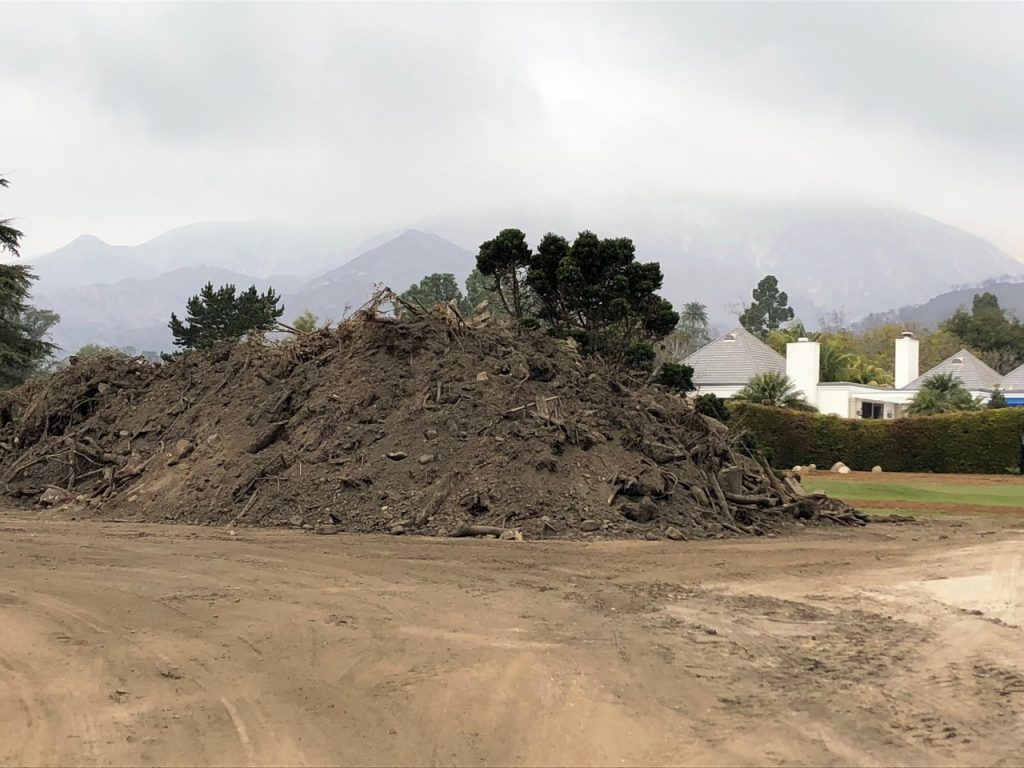
Mud removal is back-breaking work. Witnessing selfless volunteers doing that work is heartwarming and inspirational. Among the hundreds of volunteers from Montecito and Santa Barbara, the same message could be heard: “We are here to restore our community. That is what we do. We want to help these people because they are our neighbors.”
Gillian Christie, whose business Christie & Co. invests in and nurtures small companies, is but one example of this kind of selflessness. She has worked to secure donated mud removal equipment from “Can-Do Tools” in Los Angeles. She believes in and operates under the philosophy that “the best help is in your own backyard.” Tom Schleck, a former Montecito Association director, and now a MERRAG (Montecito Emergency Response & Recovery Action Group) volunteer, echoes that same philosophy: “It’s not me; it’s us.”
County Assistance Stingy and Insufficient
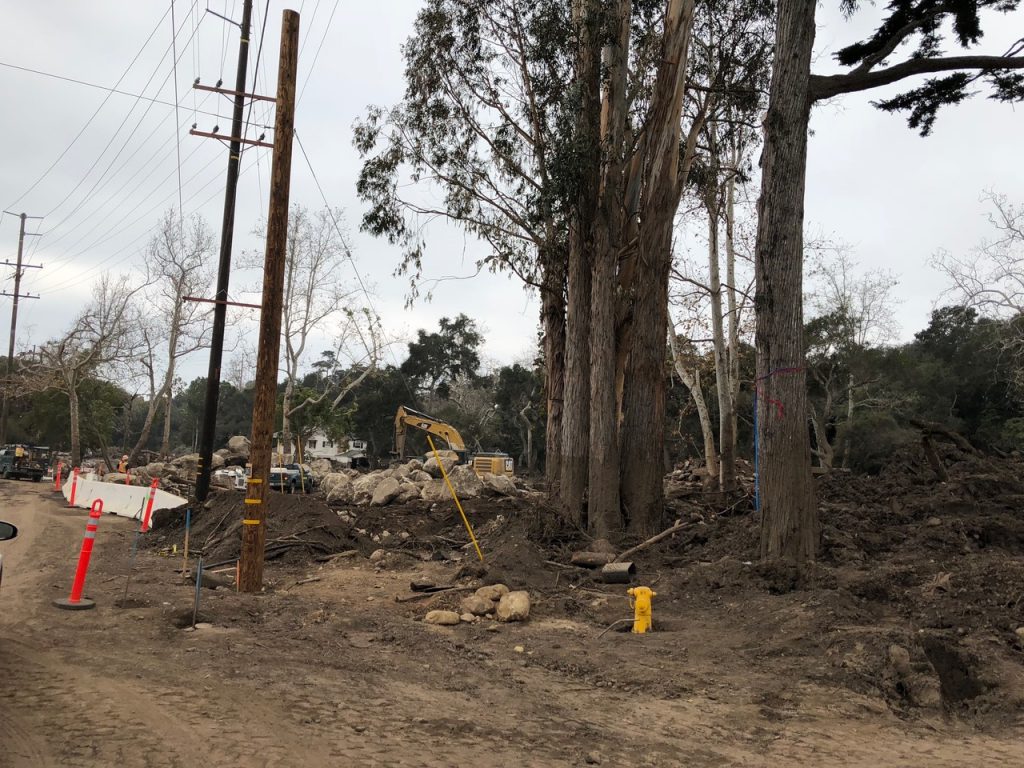
The county’s position regarding mud removal on private property has been to ask residents to clear and stack the stuff on their own private property at their own expense, and wait for the county to come up with a solution of where to put this “private property” and at what cost for removal?
Mud containing fecal matter and other toxins becomes a forerunner to the growth of black mold inside homes. Prompt and safe removal becomes a health and safety issue as well as disaster recovery issue.
The cost of mud removed from public property is usually reimbursed to the county by emergency disaster and FEMA funding. For questionable reasons, this same reimbursement plan is not available to cover the cost of mud and debris removal on private property.
It is an artificial distinction to treat disaster-generated mud on public and private property differently. The origin and destination of the debris and mud is co-mingled. First responders, searching for victims, indiscriminately stacked mud, wherever needed, on both private and public property. Cars, trees and debris flowed randomly from federal, state and county public property onto private property.
During the rescue phase of our twin disasters, a single unified Incident Commander drew upon whatever federal, state and local resources were needed, regardless of cost to save lives. There was no talk of a difference in rescues on public or private property. It makes no sense now to parse responsibility for mud removal between an unworkable trilogy of homeowners, recalcitrant insurance carriers, and county or state or FEMA agencies, each trying to avoid cost responsibilities.
Sonoma Solution
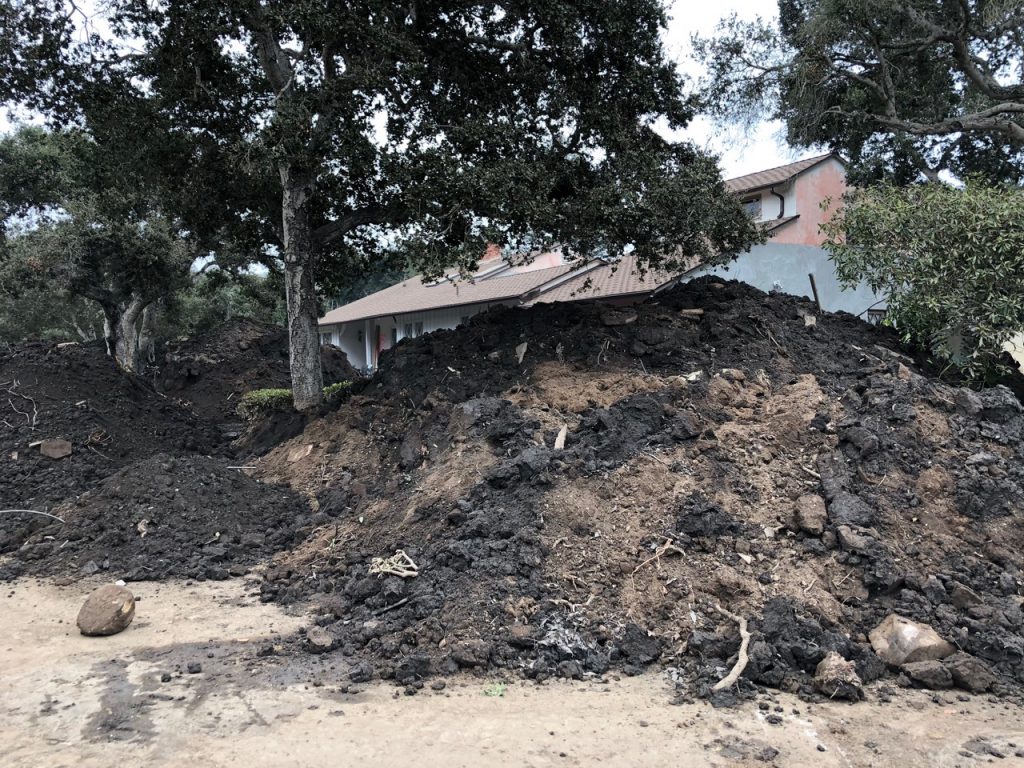
Following the Tubbs Fire in October 2017, which destroyed at least 5,500 homes and other structures, Sonoma County enacted a “Consolidated Fire Debris Removal Program” for removal of soil and debris from private property. The plan requires the EPA to remove ash and hazardous waste on a mandatory basis. At each homeowner’s option, the Governor’s Office of Emergency Services (Cal OES), FEMA and the U.S. Army Corps of Engineers (headed up by a full three-star U.S. Army general) will remove all remaining soil and debris at no cost to private owners. Subsequent private insurance reimbursements for the removal task are remitted to the program. When asked about the Sonoma County program, First District Supervisor Das Williams said, “We looked at it, and it wouldn’t work in Santa Barbara County.”
Let’s Just Do It
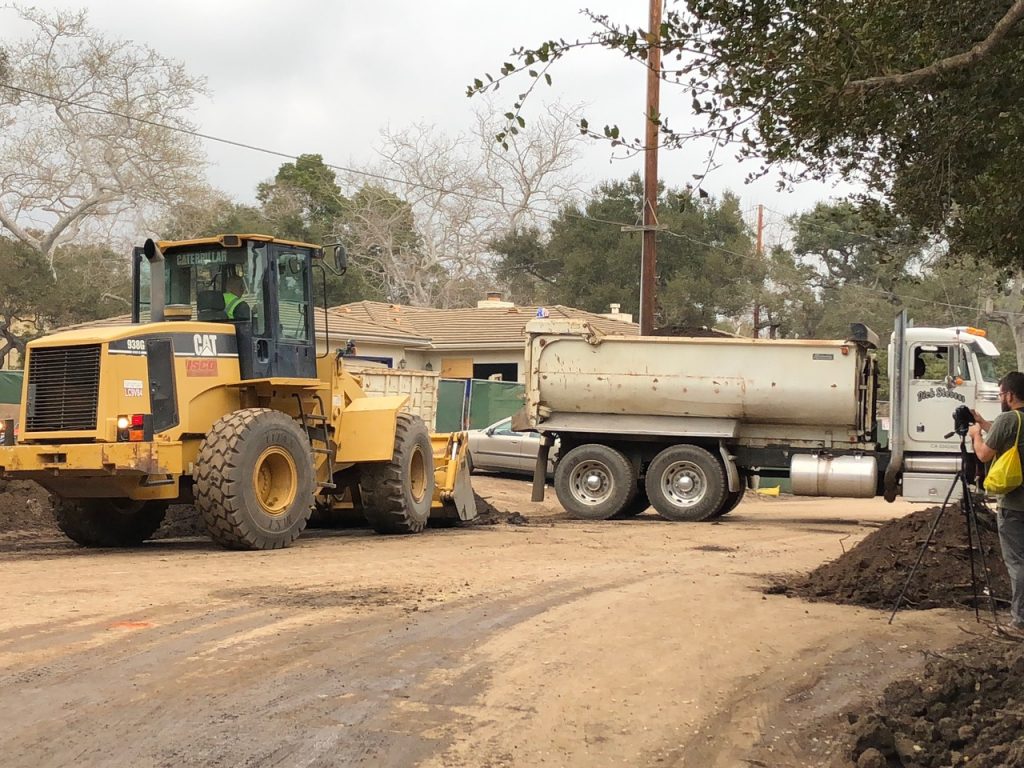
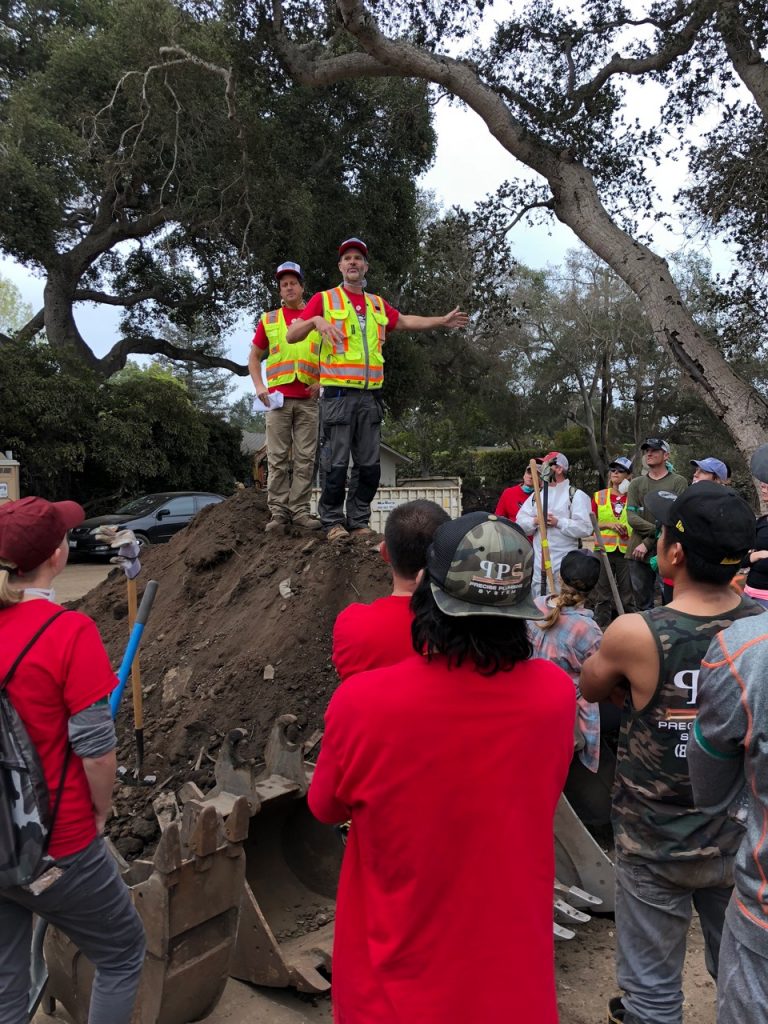
We cannot wallow too long in this mud. There are some 18,000 cubic yards of it in Montecito Oaks alone, which has now been pushed from ½-acre home sites to curbside. Who will take it away and who will bear the cost of removal?
Recently, the county agreed to remove 900 cubic yards of curbside mud as a test program, or 5% of the total. County lawyers allowed the county to engage in this test removal program if a recognized non-profit, in this case, the local chapter of Habitat for the Humanities, participated alongside the unofficial Bucket Brigade volunteers. Each Montecito Oaks home site was rationed to three truckloads of county mud removal. This week, the county decided it cannot fund any additional removals from private property.
When our community was in a “rescue mode” immediately following both the fire and debris flow, a single incident commander from Cal Fire decided what resources were needed and dispensed aid to wherever it was needed, regardless of private or public property. The goal was to save lives and homes. Now that we have moved into the “recovery mode,” each agency is back to doing its own thing, while trying to push costs onto someone else.
What happens next becomes a function of Das Williams’s ability to convince county leadership to override strong objections from county lawyers and bean counters, and do the right thing.
It is time for this community and its leadership to take a page from Abe Powell’s book of creative management: “The secret is to lift your head out of the mud,” he suggests, “and just do it!”
